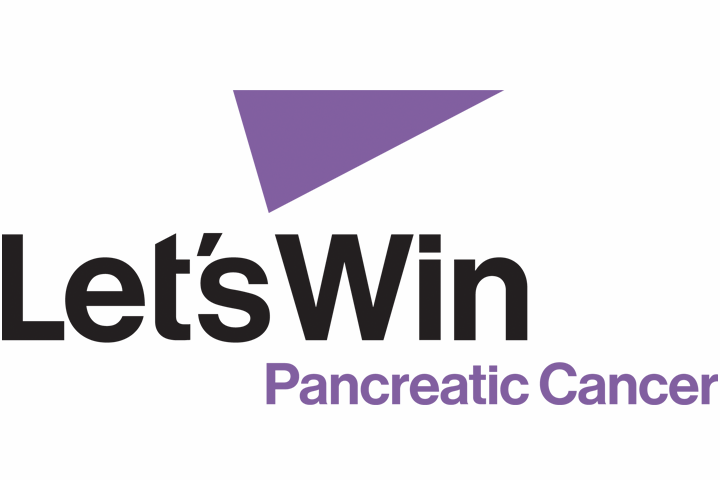Research Updates from ASCO GI 2023

The 2023 ASCO Gastrointestinal Cancers (GI) Symposium, held in San Francisco, California, from January 19-21, brought together some of the world’s leading gastrointestinal oncologists.
Now in its 20th year, the Symposium featured new research, new strategies, and new multidisciplinary approaches across the GI cancer care continuum. The theme of this year’s Symposium was “Applying Innovation, Transforming Care, and Advancing Equity,” which encompassed the latest progress in cancer screening, diagnosis, and treatment, as well as the need for new approaches designed to bring equitable access to all patients with GI cancers.
Colorectal cancers and esophageal cancers are among the most prevalent of GI cancers in the U.S. Although pancreatic cancer is less common, it remains one of the most formidable cancers to diagnose early and to treat effectively. The good news is that due to some remarkable research that has translated to new clinical approaches, the overall outlook for many pancreatic cancer patients is trending upwards. The American Cancer Society’s Facts and Figures for 2023 pegs the five-year survival rate for pancreatic cancer at 12 percent, up from 11 percent in 2022. That one percentage point increase represents 641 more patients whose lives were saved.
Here are just a few of the pancreatic cancer highlights from this year’s Symposium. As always, Let’s Win will continue to cover some of this research in more depth during the coming year.
Positive NAPOLI-3 Results in Metastatic Pancreatic Cancer
Let’s Win reported early results of the multisite NAPOLI-3 trial in December 2022. At the ASCO GI Symposium updated results were shared. According to this data, combination treatment with liposomal irinotecan, 5-fluorouracil/leucovorin, and oxaliplatin (NALIRIFOX) continued to outperform treatment with nab-paclitaxel and gemcitabine (Gem/NabP) in patients with metastatic pancreatic ductal adenocarcinoma.
- NALIRIFOX improved both progression-free survival (PFS) and overall survival (OS), compared with Gem/NabP, for metastatic patients who had no prior treatment.
- The objective response rate was higher in the NALIRIFOX arm than in the Gem/NabP arm (41.8% and 36.2%, respectively). The complete response rate was 0.3% in both arms.
- Patients in the NALIRIFOX arm had significantly longer PFS and OS. The median OS was 11.1 months in the NALIRIFOX arm and 9.2 months in the Gem/NabP arm.
- The rate of treatment-related adverse events (trAEs) was 95.1% in the NALIRIFOX arm and 92.9% in the Gem/NabP arm. The rate of grade 3 or higher trAEs was 70.8% and 68.1%, respectively. The rate of fatal trAEs was 1.6% and 2.1%, respectively.
The two regimens had different safety profiles, with NALIRIFOX recipients generally experiencing more non-hematologic toxicities, such as diarrhea, nausea, vomiting, and hypokalemia, while the Gem/NabP recipients reported more hematologic toxicities, including neutropenia, anemia, and thrombocytopenia.
Based on this analysis, the global pharmaceutical company Ipsen plans to file a supplemental New Drug Application with the U.S. Food and Drug Administration (FDA).
SEA-CD40 Phase I Trial
In an ongoing phase I trial, SEA-CD40 was combined with chemotherapy (gemcitabine and nab-paclitaxel), and an anti-PD-1 (pembrolizumab) in 61 patients with untreated metastatic pancreatic cancer. SEA-CD40 is a novel, investigational, nonfucosylated monoclonal receptor-agonistic antibody directed to CD40, which is expressed on antigen-presenting cells. In preclinical models, the combination of SEA-CD40 and chemotherapy resulted in antitumor activity which is further enhanced with anti-PD-1 treatment. The regimen demonstrated a manageable and tolerable safety profile. And the combination also showed evidence of immune activation consistent with the SEA-CD40 mechanism of action.
Frailty Index Predictive of Survival in Older Adults with Pancreatic Cancer
Due to frailty, patients with pancreatic cancer may not tolerate some standard treatments. Researchers from the University of Alabama at Birmingham found that a newly developed frailty index was predictive of overall survival in older patients with pancreatic cancer. The hope is that clinicians can use this information to choose treatment approaches by frailty status. That can include chemotherapy dose reductions or changes in frequency of treatment. The analysis included 254 participants, with a median age of 70 years. Approximately half were men, 77% non-Hispanic white, and 43.4% had stage IV disease. A total of 102 (40.2%) were classified as frail, 66 were pre-frail (defined as functional but vulnerable, 26.0%), and 86 were robust (33.9%). When looking across these three groups, no significant differences in clinical or demographic characteristics were observed. There was a significant difference in overall survival over a two-year period across the three frailty groups. Compared with robust status, those with frail status had a higher risk of mortality. Aside from decreasing dose intensity and frequency, researchers say clinicians should address other issues among this population, including providing nutrition support, ensuring adequate pain relief, and patient preferences.
Perioperative Chemotherapy
Perioperative chemotherapy with single-regimen either FOLFIRINOX (FFX) or gemcitabine/nab-paclitaxel (Gem/NabP) is the current standard of care for pancreatic and periampullary cancers with overall survival (OS) of two to three years without preselected CA19-9 levels. Sequential chemotherapy with FFX plus Gem/NabP has recently been investigated in metastatic pancreatic cancer and has shown to improve OS. In this study, researchers found that sequential perioperative chemotherapy with combined FFX plus Gem/NabP for resected pancreatic cancer is effective and potentially prolongs survival, compared to historical controls who received single regimen.
Radiation and Locally Advanced Pancreatic Cancer
Radiation is among the first-line therapy options in treatment guidelines for locally advanced pancreatic cancer. It is used primarily for local disease control and symptoms. Researchers performed an exploratory analysis to compare the toxicity and efficacy between patients receiving either stereotactic body radiation therapy (SBRT) or intensity-modulated radiation therapy (IMRT) during the induction phase (prior to randomization) of a phase III trial for localized intra-arterial gemcitabine therapy. When compared to IMRT, the researchers found SBRT demonstrated improved tolerability for treatment of patients with locally advanced disease with comparable clinical efficacy.
Poor Compliance for Genetic Testing Guidelines
In 2019, guidelines for pancreatic cancer treatment were updated with a recommendation for all patients to undergo genetic testing for germline pathogenic variants. In this study, researchers evaluated compliance with these guidelines by looking at genetic testing in the 12 months before and after the guidelines were issued. They also looked at social and clinical factors associated with genetic testing. The researchers found that testing increased very modestly after the guidelines were issued. Adherence to the updated guidelines is poor, and germline genetic testing in pancreatic cancer patients remains insufficient. To help fix this issue, the researchers say efforts to increase awareness of benefits of testing, which include personalized therapies for patients and cascade testing in family members for subsequent enrollment in pancreatic cancer surveillance programs, could improve future uptake.
Phase I Treatment Combination Study for Locally Advanced Pancreatic Cancer
Surgery remains the only potential cure for pancreatic cancer. However, patients with locally advanced disease often have involvement of vital adjacent structures that prevents surgery as upfront treatment. Neoadjuvant chemotherapy and/or radiation allows some patients with locally advanced disease to undergo surgery. But outcomes remain dismal. In this trial, researchers investigated the potential benefit of combining chemotherapy, radiation, and immunotherapy to improve outcomes in locally advanced disease by enhancing antitumor immunity. The researchers tested a combination of GVAX, nivolumab, and an agent dubbed BMS-813160. The researchers reported phase I results, and the combination appears safe. Neoadjuvant use does not lead to a delay in surgery.





